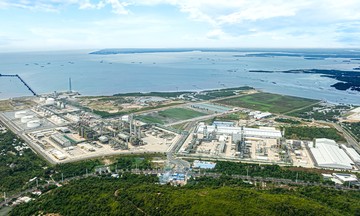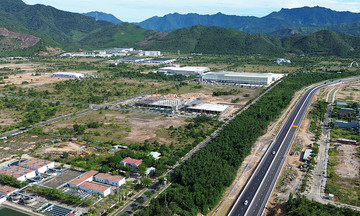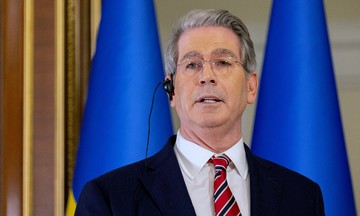On 30/7, former US President Donald Trump signed an executive order imposing a 50% import tariff on most goods imported from Brazil, effective 6/8. The move was intended to pressure Brazilian President Luiz Inacio Lula da Silva, as Trump believed the Brazilian Supreme Court was unfairly prosecuting his ally, former Brazilian President Jair Bolsonaro.
Compared to the retaliatory tariffs recently updated for dozens of countries, the 50% figure is even higher. However, experts believe this pressure is unlikely to derail Latin America's largest economy.
 |
Brazilian President Luiz Inacio Lula da Silva speaks in Addis Ababa, Ethiopia on 18/2. Photo: AFP |
Brazilian President Luiz Inacio Lula da Silva speaks in Addis Ababa, Ethiopia on 18/2. Photo: AFP
The primary reason for this resilience is the broad range of exemptions, which exclude items like aircraft, energy, and orange juice. Consequently, the 50% tariff applies to only about 36% of the value of Brazilian exports to the US. Luiza Pinese, an economist at financial services group XP Investimentos, predicts the tariff's impact on this year's GDP will be just 0.15 percentage points. "We had expected a limited impact, but it's even smaller thanks to the exemptions," she said.
Similarly, Goldman Sachs maintains its forecast of 2.3% growth for the Brazilian economy this year, citing "significant" exemptions. The bank also suggests that government support for affected sectors will mitigate the economic impact.
Brazil's resilience also stems from its diversified market reach. Unlike Mexico and Canada, which sell roughly three-quarters of their exports to the US, the world's largest economy only purchases 12% of Brazil's exports. Meanwhile, Brazil's exports to China have doubled over the past decade, now accounting for 28% of its total exports.
Furthermore, many items affected by Trump's tariffs, such as beef and coffee, can readily find alternative markets. Planning Minister Simone Tebet points out that nearly one-half of agricultural exports are destined for Asia, compared to 10% for the US.
"Brazil is dependent on the US, yes, but also on the BRICS nations, Europe, and Mercosur," she noted last week, referring to major developing nations like China, India, and Russia, as well as the South American trade bloc.
Another crucial factor is that Brazil's economy is not heavily reliant on exports. According to experts, Brazil is less open to trade than most major global economies, limiting the negative impact of external disruptions.
World Bank data shows that exports and imports accounted for 36% of Brazil's GDP last year, less than one-half that of Mexico and Paraguay, and only one-quarter that of export-focused Asian economies like Thailand and Malaysia.
Thiago Carlos, emerging markets investment manager at PIMCO, notes that most of Brazil's exports are easily redirected to other markets. In the short term, he suggests, the increased domestic food supply could even help reduce inflation.
"With inflation potentially decreasing, the central bank might find room to start easing monetary policy sooner than expected," Carlos stated. The current benchmark interest rate is 15%, reflecting an extremely tight monetary policy that restrains growth.
Analysts polled by Reuters estimate that even without a trade agreement with the US and before the exemptions, Brazil's 2026 growth outlook remains virtually unchanged from the general consensus of 1.6-1.7%.
However, the 50% tariffs still pose some challenges for the Brazilian economy. Luis Otavio Leal, chief economist at asset management firm G5 Partners, warns of potential ripple effects if government support packages fail to effectively protect vulnerable sectors and jobs. He points out that exemptions apply to nearly 700 products, while Brazil exports around 4,000 items to the US. "A substantial number of businesses are not covered by the exemptions," he said.
Earlier this week, the Brazilian Central Bank stated that US tariffs could have "significant" impacts on specific sectors. However, the broader macroeconomic impact remains uncertain, depending on negotiations and market risk assessments.
Flavio Ataliba, a researcher at Brazil's FGV University, notes that the regional diversity of this vast nation will lead to uneven impacts. The Northeast region, in particular, may be more heavily affected due to its export structure, which primarily consists of low-value-added, labor-intensive products such as fresh fruit, seafood, textiles, and footwear, all currently subject to the 50% tariff.
Phien An (Reuters)












